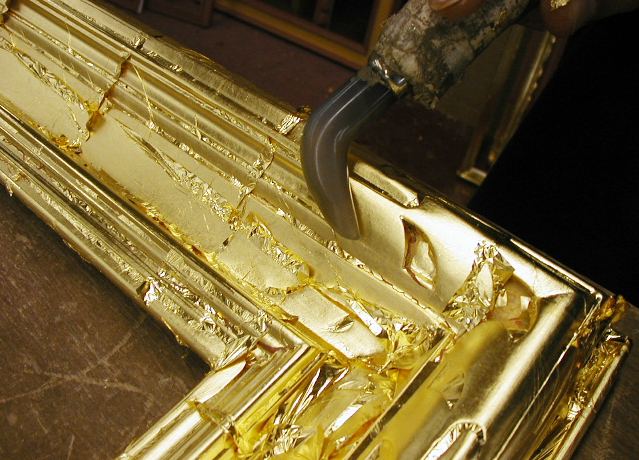|
Banjo Clock
The banjo clock, or banjo timepiece, is an American wall clock with a banjo-shaped case. It was invented by Simon Willard, originally of Grafton, Massachusetts, later of Roxbury, Massachusetts, and patented in 1802. The banjo clock normally lacks a striking mechanism and indicates time only by its hands and dial, for which reason some horologists may insist upon calling it a timepiece rather than a true clock. In popular usage though, no such distinction is made. Wooden case The banjo style of wooden case usually features a round opening for a painted dial, a long-waisted throat, and a rectangular pendulum box with hinged door. Both the throat and door are ornamented with reverse-painted (''verre églomisé'') glass panels, and the case is usually flanked by curved and pierced brass frets. A finial mounted atop the case usually takes the form of a cast-brass eagle or a turned, giltwood acorn The acorn is the nut (fruit), nut of the oaks and their close relatives (genera '' ... [...More Info...] [...Related Items...] OR: [Wikipedia] [Google] [Baidu] |
Banjo Clock 001
The banjo is a stringed instrument with a thin membrane stretched over a frame or cavity to form a resonator. The membrane is typically circular, and in modern forms is usually made of plastic, where early membranes were made of animal skin. Early forms of the instrument were fashioned by African Americans and had African antecedents. In the 19th century, interest in the instrument was spread across the United States and United Kingdom by traveling shows of the 19th-century minstrel show fad, followed by mass production and mail-order sales, including instructional books. The inexpensive or home-made banjo remained part of rural folk culture, but five-string and four-string banjos also became popular for home parlor music entertainment, college music clubs, and early 20th century jazz bands. By the early 20th century, the banjo was most frequently associated with folk, cowboy music, and country music. By mid-century it had come to be strongly associated with bluegrass. Eventua ... [...More Info...] [...Related Items...] OR: [Wikipedia] [Google] [Baidu] |
Verre églomisé
''Verre églomisé'' is a French term referring to the process of applying both a design and gilding onto the rear face of glass to produce a mirror finish. The name is derived from the 18th-century French decorator and art-dealer Jean-Baptiste Glomy (1711–1786), who was responsible for its revival. Glomy's technique was a relatively simple one of applying decorative designs in a combination of plain colour and gilding, usually to glass picture frames. However, over time it has come to be used to describe nearly any process involving back-painted and gilded glass, however elaborate. The technique of back-painting glass actually dates back to pre-Roman eras. One of the key historical periods of the art was in Italy during the 13th to 16th centuries. Small panels of glass with designs formed by engraved gilding were applied to reliquaries and portable altars. The method used is described by Cennino Cennini. Other practitioners include Jonas Zeuner and Hans Jakob Sprungli (155 ... [...More Info...] [...Related Items...] OR: [Wikipedia] [Google] [Baidu] |
Clock Designs
A clock or chronometer is a device that measures and displays time. The clock is one of the oldest human inventions, meeting the need to measure intervals of time shorter than the natural units such as the day, the lunar month, and the year. Devices operating on several physical processes have been used over the millennia. Some predecessors to the modern clock may be considered "clocks" that are based on movement in nature: A sundial shows the time by displaying the position of a shadow on a flat surface. There is a range of duration timers, a well-known example being the hourglass. Water clocks, along with sundials, are possibly the oldest time-measuring instruments. A major advance occurred with the invention of the verge escapement, which made possible the first mechanical clocks around 1300 in Europe, which kept time with oscillating timekeepers like balance wheels., pp. 103–104., p. 31. Traditionally, in horology (the study of timekeeping), the term ''clock'' was us ... [...More Info...] [...Related Items...] OR: [Wikipedia] [Google] [Baidu] |
American Inventions ...
The following articles cover the timeline of United States inventions: * Timeline of United States of America inventions (before 1890), before the turn of the century * Timeline of United States inventions (1890–1945), before World War II * Timeline of United States inventions (1946–1991), during the Cold War * Timeline of United States inventions (after 1991), after the dissolution of the Soviet Union {{DEFAULTSORT:Timeline of United States Inventions United States inventions United States The United States of America (USA), also known as the United States (U.S.) or America, is a country primarily located in North America. It is a federal republic of 50 U.S. state, states and a federal capital district, Washington, D.C. The 48 ... [...More Info...] [...Related Items...] OR: [Wikipedia] [Google] [Baidu] |
1802 Introductions
Eighteen or 18 may refer to: * 18 (number) * One of the years 18 BC, AD 18, 1918, 2018 Film, television and entertainment * 18 (film), ''18'' (film), a 1993 Taiwanese experimental film based on the short story ''God's Dice'' * Eighteen (film), ''Eighteen'' (film), a 2005 Canadian dramatic feature film * 18 (British Board of Film Classification), a film rating in the United Kingdom, also used in Ireland by the Irish Film Classification Office * 18 (Dragon Ball), 18 (''Dragon Ball''), a character in the ''Dragon Ball'' franchise * "Eighteen", a List of 12 oz. Mouse episodes#ep17, 2006 episode of the animated television series ''12 oz. Mouse'' Science * Argon, a noble gas in the periodic table * 18 Melpomene, an asteroid in the asteroid belt Music Albums * 18 (Moby album), ''18'' (Moby album), 2002 * 18 (Nana Kitade album), ''18'' (Nana Kitade album), 2005 * ''18...'', 2009 debut album by G.E.M. * 18 (Jeff Beck and Johnny Depp album), ''18'' (Jeff Beck and Johnny Depp album), 2022 ... [...More Info...] [...Related Items...] OR: [Wikipedia] [Google] [Baidu] |
Krause Publications
Krause Publications is an American publisher of hobby magazines and books. The company was started by Chester L. Krause (19232016) in 1952 and published '' Numismatic News''. In the coin collecting community the company is best known for its '' Standard Catalog of World Coins'', a series of coin catalogs commonly referred to as ''Krause-Mishler'' catalogs or simply ''Krause'' catalogs; they provide information, pricing, and Krause-Mishler (KM) numbers referring to coin rarity and value. Krause-Mishler (named for Krause and longtime employee Clifford Mishler) numbers are the most common way of assigning values to coins. The first edition was published in 1972. In addition, they established the Coin of the Year Award, first issued in 1984, for excellence in coinage design. In the paper money collecting community, the company is known for its paper money catalogs. In 1975, the first edition of the seminal '' Standard Catalog of World Paper Money'' authored by Albert Pick wa ... [...More Info...] [...Related Items...] OR: [Wikipedia] [Google] [Baidu] |
Acorn
The acorn is the nut (fruit), nut of the oaks and their close relatives (genera ''Quercus'', ''Notholithocarpus'' and ''Lithocarpus'', in the family Fagaceae). It usually contains a seedling surrounded by two cotyledons (seedling leaves), enclosed in a tough Nutshell, shell known as the pericarp, and borne in a cup-shaped Calybium, cupule. Acorns are long and on the fat side. Acorns take between 5 and 24 months (depending on the species) to mature; see the List of Quercus species, list of ''Quercus'' species for details of oak classification, in which acorn morphology (biology), morphology and phenology are important factors. Etymology The word ''acorn'' (earlier ''akerne'', and ''acharn'') is related to the gothic language, Gothic name ''akran'', which had the sense of "fruit of the unenclosed land". The word was applied to the most important forest produce, that of the oak. Geoffrey Chaucer, Chaucer spoke of "achornes of okes" in the 14th century. By degrees, popular etym ... [...More Info...] [...Related Items...] OR: [Wikipedia] [Google] [Baidu] |
Gilding
Gilding is a decorative technique for applying a very thin coating of gold over solid surfaces such as metal (most common), wood, porcelain, or stone. A gilded object is also described as "gilt". Where metal is gilded, the metal below was traditionally silver in the West, to make silver-gilt (or ''vermeil'') objects, but gilt-bronze is commonly used in China, and also called ormolu if it is Western. Methods of gilding include hand application and gluing, typically of gold leaf, chemical gilding, and electroplating, the last also called gold plating. Parcel-gilt (partial gilt) objects are only gilded over part of their surfaces. This may mean that all of the inside, and none of the outside, of a chalice or similar vessel is gilded, or that patterns or images are made up by using a combination of gilt and ungilted areas. Gilding gives an object a gold appearance at a fraction of the cost of creating a solid gold object. In addition, a solid gold piece would often be too soft or to ... [...More Info...] [...Related Items...] OR: [Wikipedia] [Google] [Baidu] |
Eagle
Eagle is the common name for the golden eagle, bald eagle, and other birds of prey in the family of the Accipitridae. Eagles belong to several groups of Genus, genera, some of which are closely related. True eagles comprise the genus ''Aquila (bird), Aquila''. Most of the 68 species of eagles are from Eurasia and Africa. Outside this area, just 14 species can be found—two in North America, nine in Central and South America, and three in Australia. Eagles are not a natural group but denote essentially any kind of bird of prey large enough to hunt sizeable (about 50 cm long or more overall) vertebrates. Etymology The word "eagle" is borrowed into English from and , both derived ultimately from ("eagle"). It is cognate with terms such as , and . It is broadly synonymous with the less common English term "erne" or "earn", deriving from , from , in which it acts as the usual word for the bird. The Old English term is turn derived from and is cognate with other synonymous ... [...More Info...] [...Related Items...] OR: [Wikipedia] [Google] [Baidu] |
Finial
A finial () or hip-knob is an element marking the top or end of some object, often formed to be a decorative feature. In architecture, it is a small decorative device, employed to emphasize the Apex (geometry), apex of a dome, spire, tower, roof, or gable or any of various distinctive ornaments at the top, end, or corner of a building or structure. A finial is typically carved in stone. Where there are several such elements they may be called pinnacles. The very top of a finial can be a floral or foliated element called a bouquet. Smaller finials in materials such as metal or wood are used as a decorative ornament on the tops or ends of poles or rods such as tent-poles or curtain rods or any object such as a piece of furniture. These are frequently seen on top of bed posts or clocks. Decorative finials are also commonly used to fasten lampshades, and as an ornamental element at the end of the handles of souvenir spoons. The charm at the end of a pull chain (such as for a ceiling ... [...More Info...] [...Related Items...] OR: [Wikipedia] [Google] [Baidu] |
Brass
Brass is an alloy of copper and zinc, in proportions which can be varied to achieve different colours and mechanical, electrical, acoustic and chemical properties, but copper typically has the larger proportion, generally copper and zinc. In use since prehistoric times, it is a substitutional alloy: atoms of the two constituents may replace each other within the same crystal structure. Brass is similar to bronze, a copper alloy that contains tin instead of zinc. Both bronze and brass may include small proportions of a range of other Chemical element, elements including arsenic, lead, phosphorus, aluminium, manganese and silicon. Historically, the distinction between the two alloys has been less consistent and clear, and increasingly museums use the more general term "list of copper alloys, copper alloy". Brass has long been a popular material for its bright gold-like appearance and is still used for drawer pulls and door handle, doorknobs. It has also been widely used to ma ... [...More Info...] [...Related Items...] OR: [Wikipedia] [Google] [Baidu] |






